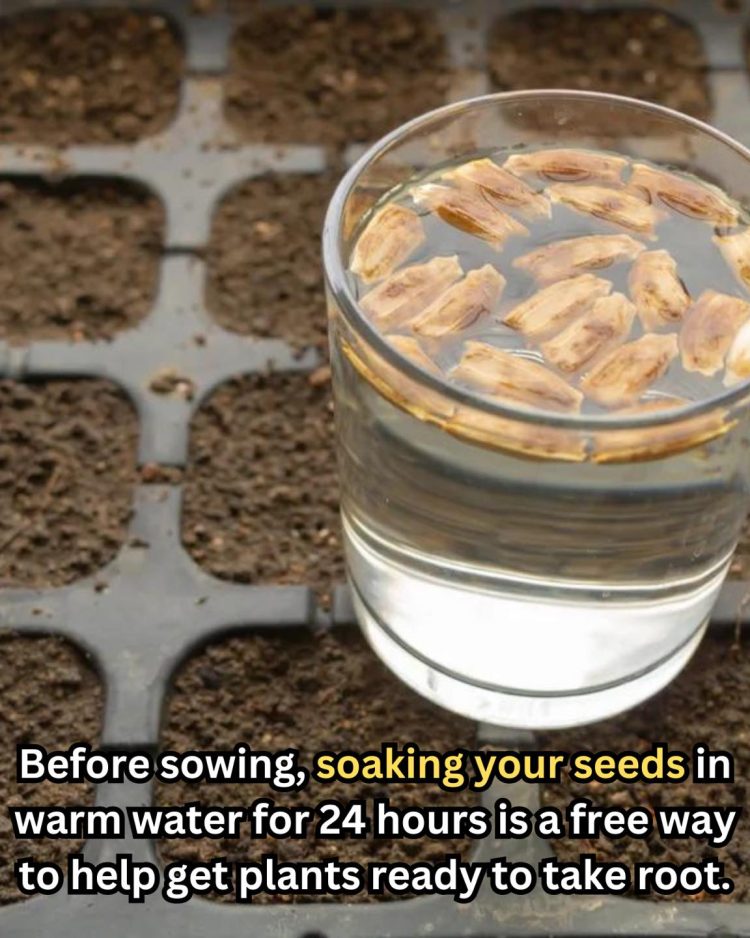When it comes to gardening, success often comes down to the little things—timing, technique, and preparation.
One often overlooked step that can make a huge difference in your garden’s growth and yield is soaking seeds before planting. This simple practice can boost germination rates, speed up sprouting, and lead to healthier seedlings.
Whether you’re sowing vegetables, herbs, or flowers, soaking your seeds is a quick and effective way to kickstart the natural growing process.
In this article, we’ll dive into seven powerful reasons why you should soak your seeds before planting, which types benefit the most, and exactly how to do it the right way for maximum results.
What Does Soaking Seeds Mean?
Soaking seeds is the process of placing seeds in water for a certain period (usually a few hours to overnight) before planting them in soil or starting trays.
The goal is to rehydrate the seed’s outer shell (seed coat) and initiate the natural germination process faster than if the seed were planted dry.
Some seeds are naturally slow to germinate due to tough outer coats or dormancy triggers. Soaking helps mimic the conditions in nature where rain or snow would gradually soften the seed before it starts to grow.
7 Brilliant Benefits of Soaking Seeds Before Planting
1. Faster Germination
One of the most immediate and noticeable benefits of soaking seeds is faster germination. Soaking jumpstarts the internal biochemical process by giving the seed immediate access to moisture.
Without soaking, seeds need time in the soil to absorb enough water before germination can even begin. This delay can extend germination times by several days.
Example:
Unsoaked pea seeds may take 7–10 days to sprout.
Soaked peas often germinate in just 3–5 days.
2. Improved Germination Rates
Some seeds simply don’t sprout well when planted dry. Soaking can dramatically improve germination success, especially in older seeds or those with hard seed coats.
By softening the shell, you give the embryo inside an easier path to push through and grow.
Best for: Beans, Peas, Beets, Chard, Nasturtiums, Sunflowers.
Note: For hard-coated seeds like morning glories, soaking may improve germination from 50% to over 90%.
3. Breaks Dormancy Naturally
Some seeds contain natural chemical inhibitors or require specific environmental cues before they will germinate.
Soaking in water can help wash away these inhibitors and simulate natural rainfall, allowing the seed to recognize that it’s safe to grow.
This is especially helpful for: Parsley, Carrot, Beet, Sweet pea, Certain perennial flowers and herbs.
4. Saves Time in Cool or Short Growing Seasons
In regions with short growing seasons, every day counts. If your seeds take too long to sprout, your harvest might be delayed—or even missed entirely.
Soaking your seeds gives them a head start, making this a must-do method for gardeners in colder climates or those starting late in the season.
Helpful for: Corn, Beans, Squash, Cucumbers, Melons
5. Softens Hard Seed Coats
Some seeds are equipped with thick or impermeable outer shells that delay germination until conditions are just right.
These seeds often benefit greatly from pre-soaking, which softens the outer coating and allows water to penetrate faster.
In some cases, a process called scarification (scratching or nicking the seed coat) is also recommended in combination with soaking.
Common seeds with hard coats: Nasturtiums, Morning glories, Sweet peas, Moonflowers, Certain trees and shrubs.
6. Reduces Risk of Seed Rot
When seeds sit in cold, wet soil without sprouting, they are vulnerable to rot and fungal diseases.
By soaking and pre-germinating seeds, you reduce the time they spend vulnerable underground, improving their chances of healthy development.
Especially useful for: Cucumbers, Melons, Zucchini, Beans.
7. Helps Identify Viable Seeds
While soaking, some seeds will float and others will sink. Floating seeds are often non-viable—meaning they are empty, immature, or damaged.
Discarding floaters before planting can save you from waiting on seeds that will never sprout.
Seed viability tip: After 30–60 minutes of soaking, skim off any seeds still floating and discard them.
What Seeds Should You Soak?
Soaking is not necessary for every seed. In fact, some seeds can be damaged or become prone to rot if soaked too long. Use the list below to know which seeds benefit the most from soaking.
Seeds That Benefit from Soaking:
see continuation on next page
